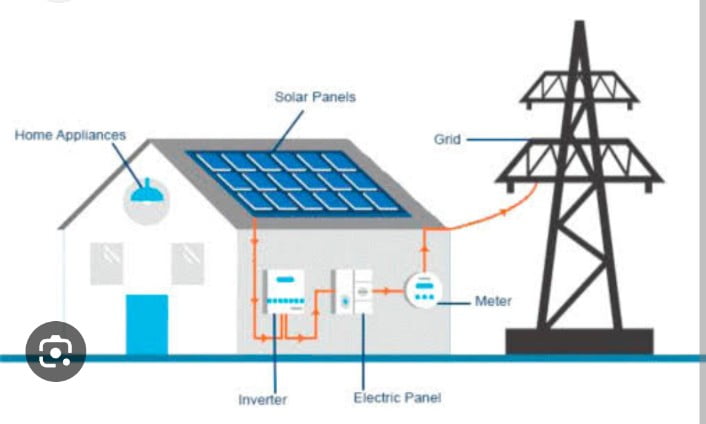The relentless drive towards a net-zero carbon economy by India, slated for accomplishment by 2050, presents an unparalleled fiscal windfall estimated at a staggering $12.7 trillion, as delineated in the New Energy Outlook: India report by BloombergNEF.
The report, elucidating two distinctive scenarios for India’s energy metamorphosis, accentuates the concomitant conundrums and opportunities that lie ahead. The inaugural scenario, dubbed the Economic Transition Scenario (ETS), encapsulates an economy-centric transformation that aligns with a global temperature ascension of 2.6 degrees Celsius by 2050. In this paradigm, whilst India makes considerable strides towards energy autonomy and decarbonization, the zenith of these objectives remains elusive by 2050.
The second scenario, christened the Net Zero Scenario (NZS), envisages a future wherein governmental and private sector forces synergize, fortified by amplified backing. This trajectory culminates in a net-zero emissions economy by 2050 sans reliance on untested technologies. This trajectory further facilitates India’s mid-century quest for energy sovereignty at an optimum cost.
Exemplifying its commitment to clean energy, India has manifested the addition of a staggering 53 gigawatts of solar and wind energy between 2018 and 2022, with a remarkable 16 gigawatts of utility-scale solar adorning the energy landscape in 2022 alone. However, solar and wind energy’s foothold still remains less than a quarter of the nation’s energy generation spectrum, with coal’s dominion persisting. This coal dependency remains the chief contributor to India’s greenhouse gas emanations.
Intricate analysis by BloombergNEF illuminates the most economically viable route for India to concurrently augment electricity accessibility and decarbonize its energy repertoire. This path advocates maximal deployment of solar and wind energy, supplemented by nuclear energy, energy storage, and carbon capture and storage (CCS) for thermal power facilities, offering a sustainable edifice.
In the NZS, wind and solar power capacity is prognosticated to burgeon thirty-fold, scaling the pinnacle of 2,998 gigawatts by 2050, with wind and solar sources constituting a colossal 80% of the electricity matrix. Nuclear energy constitutes 9%, while the residue emanates from hydroelectricity, biomass, hydrogen-powered thermal plants, and thermal power plants empowered by CCS. Even in the ETS framework, solar and wind energy are anticipated to pervade the electricity generation arena in 2050, constituting a formidable 67% of the aggregate.
To fulfill these objectives, ameliorating the grid’s pliancy to embrace variable solar and wind energy stands as an imperative imperative. Remedies encompass batteries, pumped hydro storage, and peaker gas plants, as outlined by Rohit Gadre, India Research Senior Associate at BNEF.
Under the ETS paradigm, a whopping $7.6 trillion is earmarked for investment in energy supply and demand from 2022 to 2050, averaging a substantial $262 billion annually. Conforming with the NZS trajectory and striving towards net-zero emissions warrants a magnification of investment levels by 1.7-fold, scaling an average of $438 billion per annum, translating to approximately 5% of the anticipated gross domestic product, and cumulating to a staggering $12.7 trillion by 2050.
Remarkably, funding in fossil-fuel energy recedes from $317 billion in the ETS to a paltry $142 billion in the NZS. To ameliorate emissions stemming from the residual utilization of fossil fuels in the NZS, India mandates an $870 billion investment in CCS. The substantial tranche of energy demand investment in both paradigms is allotted to electric vehicle sales, a burgeoning facet that sets aside $3.9 trillion for EV proliferation in the NZS.
Komal Kareer, India research associate at BNEF, accentuates the indispensability of audacious policy initiatives to transmigrate towards a zero-emission vehicular fleet by 2050, prognosticating that plummeting battery costs will precipitate EV assimilation and stimulate indigenous production.
Shantanu Jaiswal, head of India research at BNEF, spotlights India’s potential to sever reliance on fossil fuel imports by its centenary in 2047 through the proliferation of clean technologies, augmenting economic vistas, curbing emissions, and fortifying energy security.
The report further underscores the surging quandary of industrial CO2 emissions, slated to surpass those emanating from the power sector by the early 2040s, propelled by sectors like steel, aluminum, petrochemicals, and cement. To offset this, the pivotal roles of green hydrogen and CCS emerge in combatting this impending conundrum.
In the NZS paradigm, India’s industrial emissions climax in 2031, heralding a descent in the mid-2030s as hydrogen and carbon capture technologies infiltrate steel, cement, and petrochemical production. The indigenous requisition for hydrogen is poised to burgeon tenfold by 2050, driven by the embracement of hydrogen-fired direct-reduction furnaces in the steel sector.






